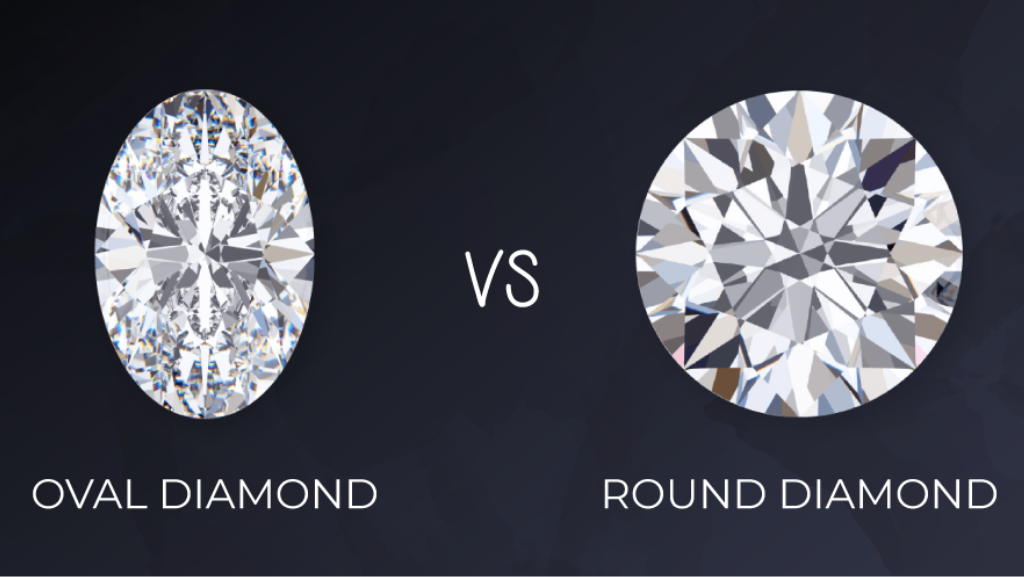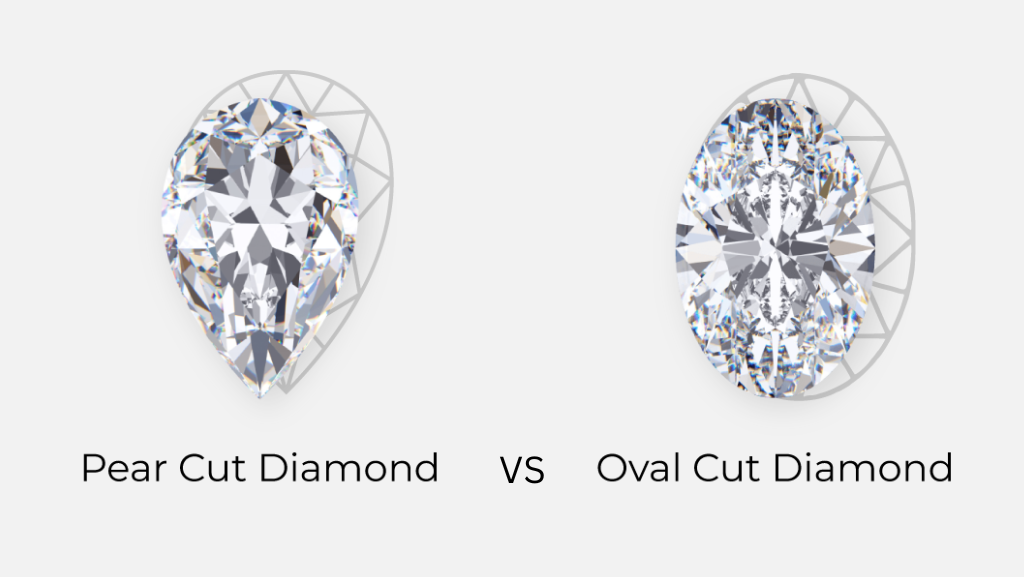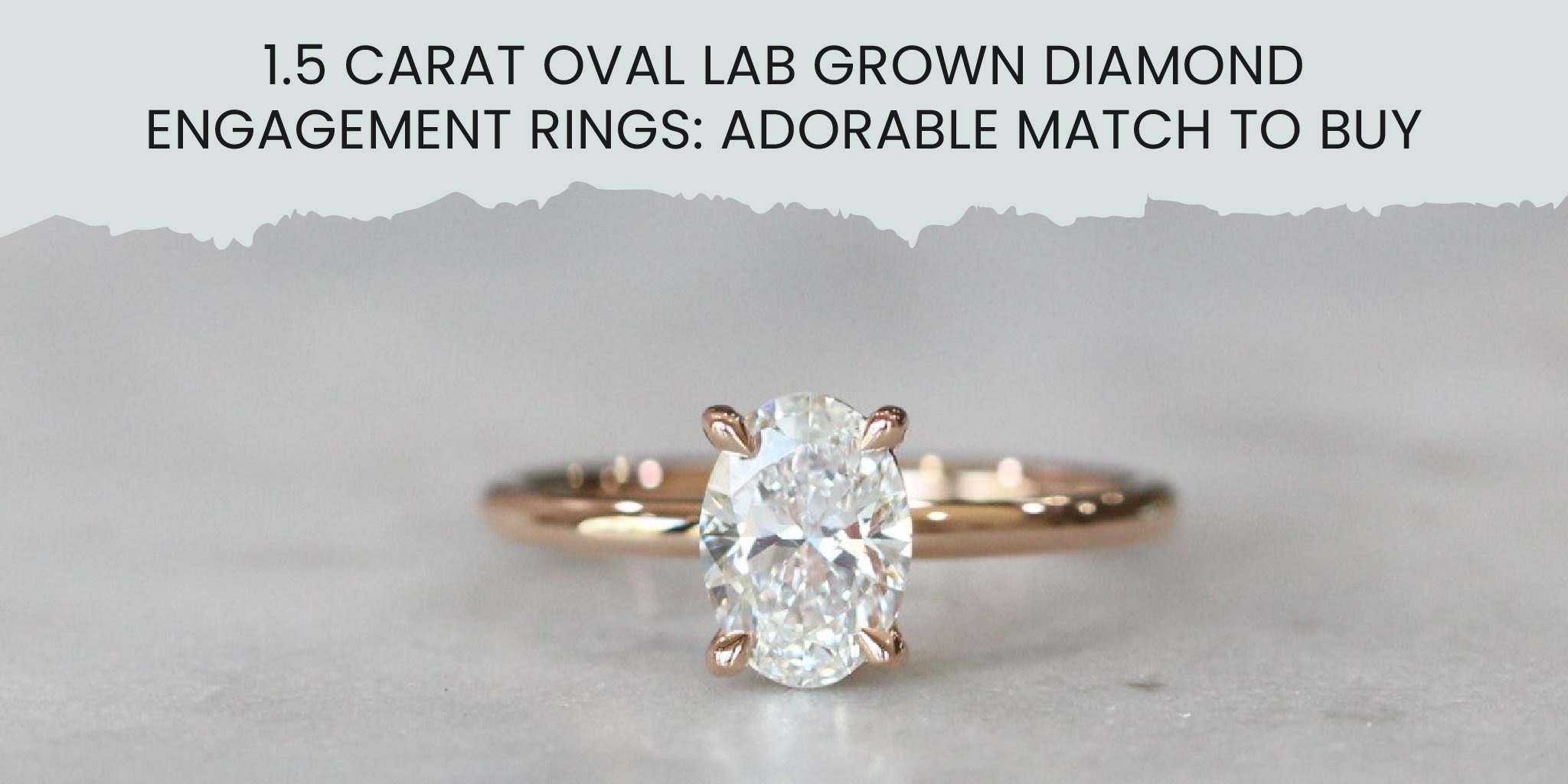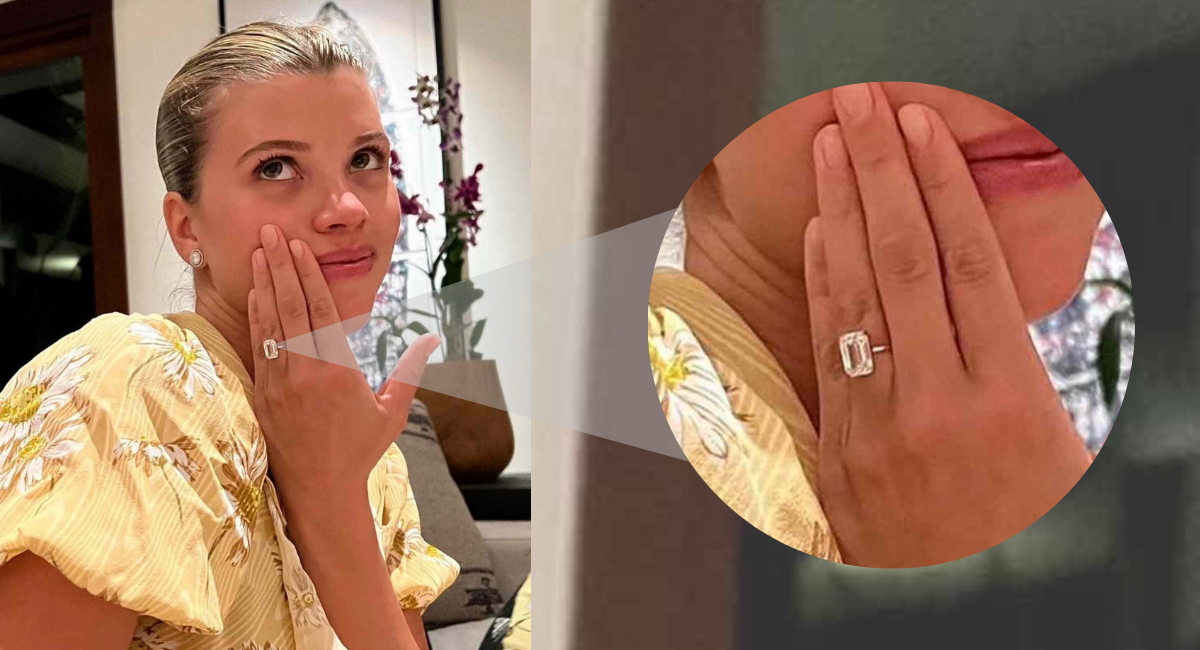Buying a Radiant Cut Diamond? Consider This Vital Advice
The path of life is paved with times of fresh starts, where relationships are made and hope blossoms. Celebrate these occasions with magnificent engagement rings that will turn heads with their classic glitter.
But there are a number of considerations when selecting an engagement ring for this kind of event. Understanding the four fundamental factors known as the 4Cs—cut, color, clarity, and carat weight—is necessary to successfully navigate the world of diamond selection.
A lot of people focus on the carat of a diamond but are dismissive when it comes to selecting a particular cut. Keep in mind that the cut of a diamond is the only factor affecting the fire, brilliance, and scintillation of the diamond.
After all, who doesn’t want a ring that has everyone’s envious eyes on it because of its unparalleled splendor? Even the slightest bit of carelessness while cutting and polishing a diamond could render appalling results.
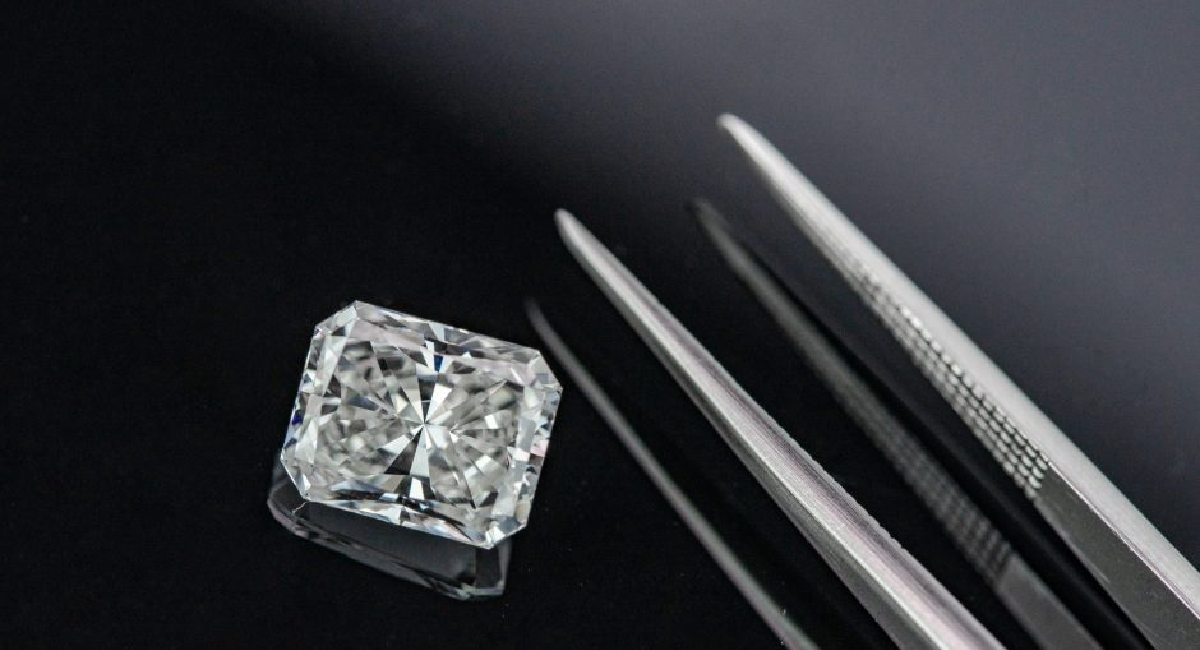
Having been cut in ideal proportions, the fire, brilliance, and scintillation of a diamond are maximized, making it one of the most mesmerizing things in the world.
The diamond’s brilliance and light-reflecting ability are determined by its cut. Color grades affect how the stone looks overall, ranging from colorless to pale yellow. The presence of flaws or defects that detract from a diamond’s purity is evaluated by clarity.
The unit of measurement for diamond size is carat weight. Finding the ideal radiant cut diamond for your regal engagement ring requires balancing these variables in order to create a stunning and unique representation of unwavering love.
Radiant cut diamond engagement rings are the ultimate in elegance; Hilary Duff and Megan Fox are the few celebrities who wear them. These stones endure over time and create a statement. The radiant diamond is perfect for you, as your love is like a radiant cut diamond, pure and clear.
Hence, come and explore the world of radiant cut diamonds in this article to learn everything you need to know to make the ideal regal engagement ring—a study in beauty and meaning.
What is a Radiant Cut Diamond?
This gemstone is one of the best diamond cuts to go for. We are talking about the radiant cut diamond. A radiant cut diamond is similar to an inverse pyramid in appearance. The hypnotizing fire and scintillation it possesses is the result of 70 finely crafted facets.
The more precise the facet, the fierier the diamond portrays itself. The stone of a radiant cut diamond acts as a prism and disperses the light passing through it. You just can’t take a look at it, and not be bewitched by how it disperses light and emanates rainbow colors.
Although technically it is a square or rectangular-shaped diamond, its facets are cut similarly to that of a round cut diamond, which makes it the magnificent diamond it is! A radiant cut diamond spectacularly combines the fire and brilliance of a round cut diamond with the elongated elegance of an emerald cut, creating a breathtakingly dazzling and radiant diamond.
This makes it one of the most promising choices for an engagement ring or a wedding band. On top of that, it is surprisingly durable against breakage because of its beveled edges, which are a further adornment to this masterpiece. This makes it perfect for people who prefer to wear their rings and jewelry on a daily basis.
Shape
Carat
Cut
Color
Clarity
Price
radiant
1.70
Ideal
G
SI1
$474 $451
View
radiant
2.00
Ideal
E
VS2
$825 $786
View
radiant
1.01
Ideal
F
VS1
$701 $526
View
radiant
1.06
Ideal
G
VS1
$476 $357
View
radiant
1.07
Ideal
G
VS1
$481 $361
View
radiant
1.15
Ideal
G
VS1
$581 $415
View
radiant
1.06
Ideal
G
VS1
$476 $357
View
radiant
1.12
Ideal
E
VS2
$511 $383
View
radiant
1.13
Ideal
E
VS2
$513 $385
View
radiant
1.11
Ideal
E
VS2
$505 $379
View
radiant
1.59
Ideal
E
VS2
$1235 $926
View
radiant
1.09
Ideal
E
VVS2
$525 $394
View
radiant
1.02
Ideal
D
VS2
$731 $548
View
radiant
1.11
Ideal
F
VS1
$765 $574
View
radiant
1.07
Ideal
D
VS1
$811 $608
View
radiant
1.16
Ideal
E
VS1
$820 $615
View
radiant
1.35
Ideal
D
VS1
$1007 $755
View
radiant
1.86
Ideal
E
VS1
$1563 $1172
View
radiant
2.00
Ideal
G
VS1
$1916 $1437
View
radiant
2.14
Ideal
D
VS2
$3080 $2310
View
The radiant cut diamond, notably the 2 carat and 3 carat variants, presents a bold and sophisticated choice for engagement rings. A 2 carat radiant cut diamond on finger, with its brilliant facets and big size, elegantly commands attention on the finger, seamlessly blending modern style with a timeless past.
Stepping up to a 3 carat radiant cut diamond on hand elevates luxury, creating a dazzling spectacle on the hand. These diamonds, with their distinctive play of light, become not just jewelry but a symbol of refined elegance and a celebration of enduring love.
Types of Radiant Cut Diamonds:
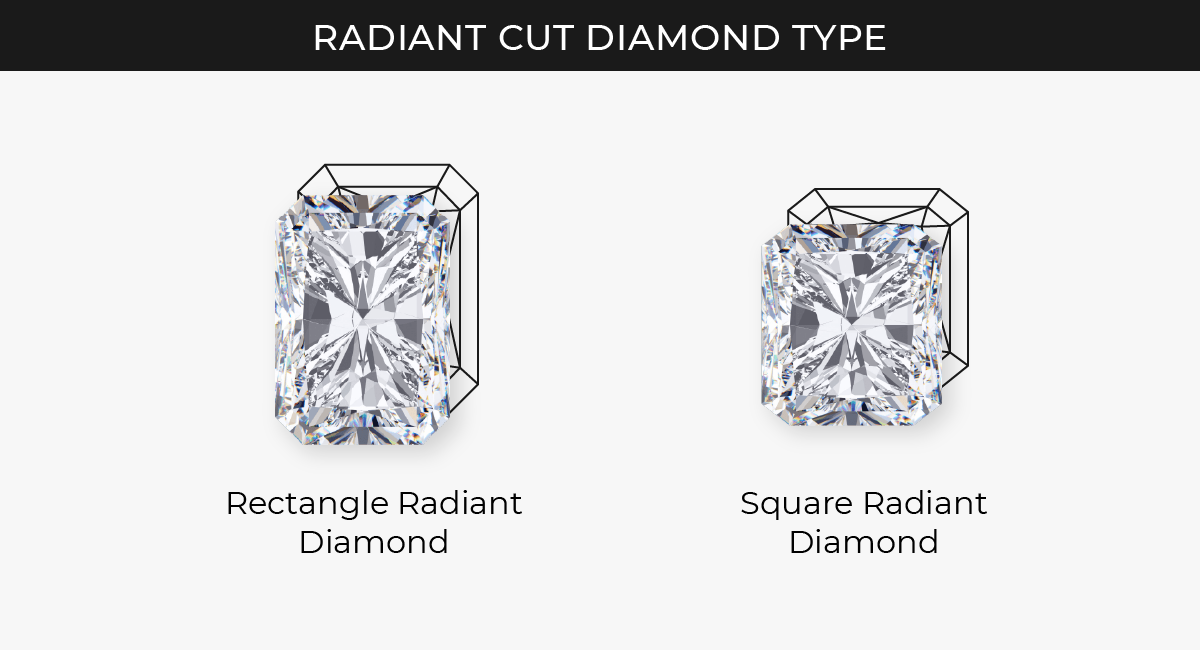
This cut can be considered a hybrid of three cuts because it combines the benefits of the three most important shapes of a diamond. There’s the exposure of an emerald cut, the blaze and sparkle of a round brilliant cut, and the truncated corners of a beautiful Asscher cut. If anyone is looking for a modern fusion and a gem that will make heads turn, then the radiant cut is the way to go.
Traditionally, radiant diamonds are cut to a rectangular outline, but there are also other cuts that produce a square-looking border. Very often, people confuse cushion cut diamonds with radiant lab diamonds because of their square outlines. But you differentiate them by looking at the angle. Radiant cut diamonds have straight edges, and cushion cut diamonds have curved edges, which give them a more modern look.
This is also why radiant cut diamonds are technically classified by the GIA as two types: “cut corner rectangle modified brilliants” and “cut-cornered square modified brilliants”. A radiant cut diamond can also be thought of as a princess-cut diamond with four corners cut.
The wide, flat design of the radiant cut allows more of the diamond to be seen when set in a ring, making it appear larger. The radiant cut is a perfect gem for engagement rings that radiate sparkle and fire due to the presence of 70 facets.
History of Radiant Cut Diamond
Radiant cut diamonds were first introduced in the 1970s and come in square or rectangular shapes, appealing to people who value princess and cushion-cut diamonds’ beauty.
The eight-sided shape, square or rectangular construction, and cut corners define the first patented radiant diamond shape. It may seem square at first, but upon closer inspection, you can see that it has a distinct rectangular outline with neatly trimmed corners, giving it a distinctive elegance.
It was first designed in the 1977s by Henry Grossbard, a master diamond cutter, who had spent nearly thirty years in the diamond cutting industry.
He then decided to create the most brilliant diamond ever, by fusing the fiery brilliance of a round cut diamond with the long, silhouette shape of a long cut diamond, like an emerald cut.
Without a doubt, it turned out to be a roaring success and Mr.Grossbard became a true explorer of the diamond industry. The brilliant, radiant-cut diamond brought an irrevocable change to the diamond industry.
More and more people wanted the cut and its demand rose exponentially. Despite being relatively new, as compared to other diamond cuts such as princess, emerald, round, etc, which have been in the market and the diamond industry for over hundreds of years, the radiant cut diamond surpasses every other cut.
You don’t need to mull it over to figure it out, though. This cut is so popular because it encompasses the characteristics of square/rectangle cut diamonds (emerald, princess) as well as round cut diamonds.
How to Choose the Best Radiant Cut Diamond?
The 4C’s of any diamond are the reasons for the diamond to be expensive or cheap. It can’t be just the size, color, or clarity cut that single-handedly decides the price of a diamond. All the 4Cs matter and thus let us explain them to you in detail.
Cut
The cut of a diamond stipulates how well the gemstone is cut and polished, while also deciding the positioning of the stone. The cut quality determines the fire and brilliance of a diamond.
The radiant cut diamond, renowned for its faceted pattern, needs to be cut with impeccable precision at the crown as well as the pavilion. An improperly cut diamond is lackluster, more so a radiant cut diamond, and nobody wants that.
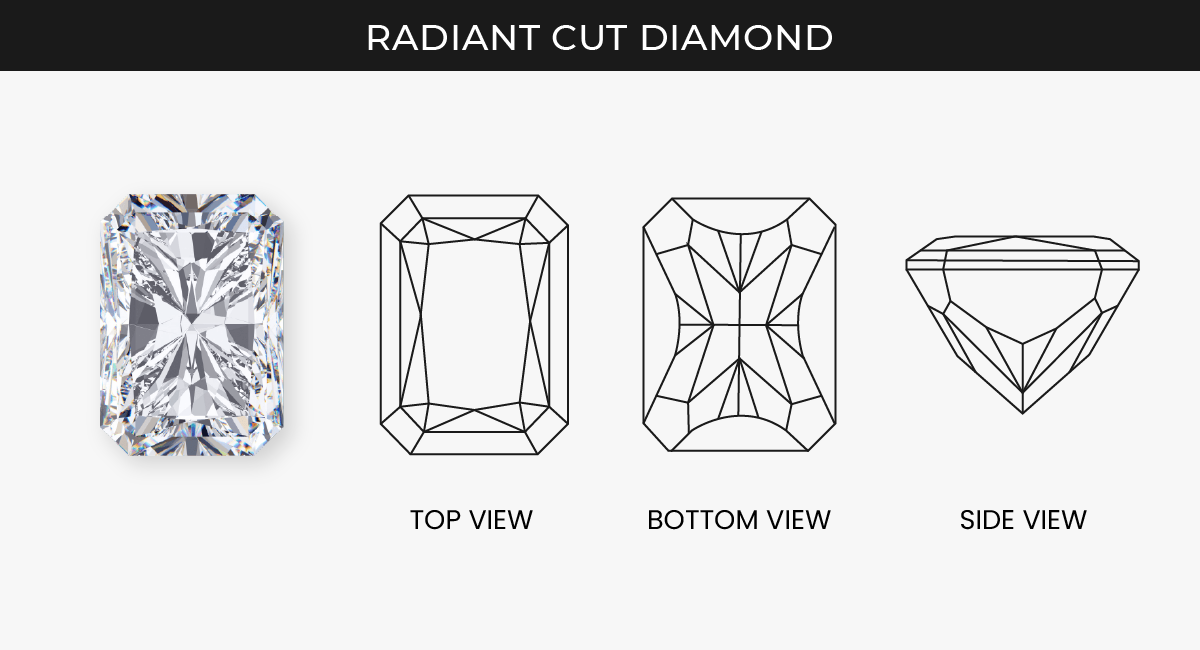
Therefore, anyone willing to buy a radiant diamond shape must carefully examine its cut. The cut quality of only round cut diamonds is graded by GIA. As in, GIA has taken out its own grading scale for round diamond cuts.
Therefore, a GIA certificate for a radiant cut diamond might be irrelevant. But if you wish you can take an expert’s opinion if you decide to purchase a loose radiant diamond.
Clarity
Since diamonds are formed deep under the Earth, each diamond has its own distinct imperfections. These imperfections can either be inclusions or blemishes. If these imperfections are not-present it is then referred to as diamond clarity.
Mined from deep within the earth, natural diamonds often bear imperfections due to their organic origin. The absence of imperfections in diamonds is referred to as clarity, and it increases their brilliance.
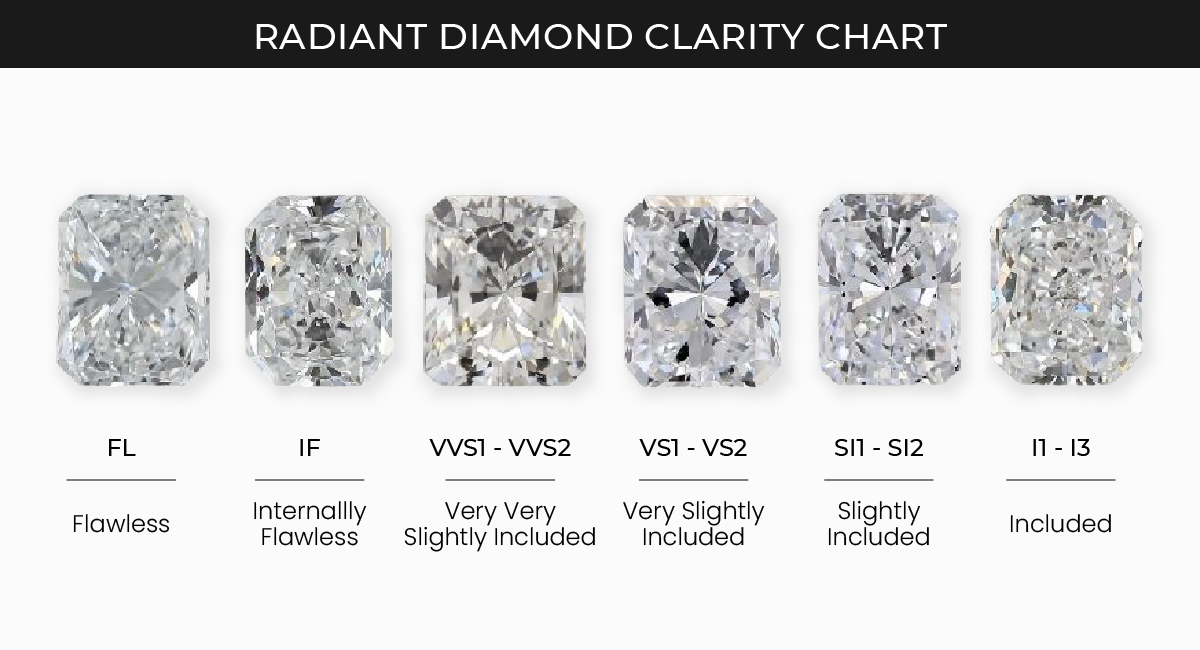
These distinct features, which are divided into inclusions (found inside the diamond) and blemishes (found on the surface), can alter how light passes through the diamond, potentially reducing its overall attractiveness.
Diamonds without these imperfections are scarce, which drastically affects their value making them immensely expensive. According to the GIA, there are eleven levels of diamond clarity. These are:
- Flawless Grade (FL)
- Internally Flawless (IF)
- Very, Very Slightly Included (VVS1, VVS2)
- Very Slightly Included (VS1, VS2)
- Slightly Included (SI1, SI2)
- Included (I1, I2, I3)
Renowned among jewelers for its brilliance, the lab grown radiant diamond shape boasts 70 intricate facets, creating exceptional light reflection.
With a square shape reminiscent of the classic emerald cut but with a touch of modern flair, this stone is a captivating showstopper.
The brilliant-cut facet pattern, both on the crown and pavilion, enhances sparkle and shine, making flawless radiant cut diamonds particularly valuable.
Color
Color is another one of the characteristics which tend to deeply affect the worth and quality determination of a diamond.
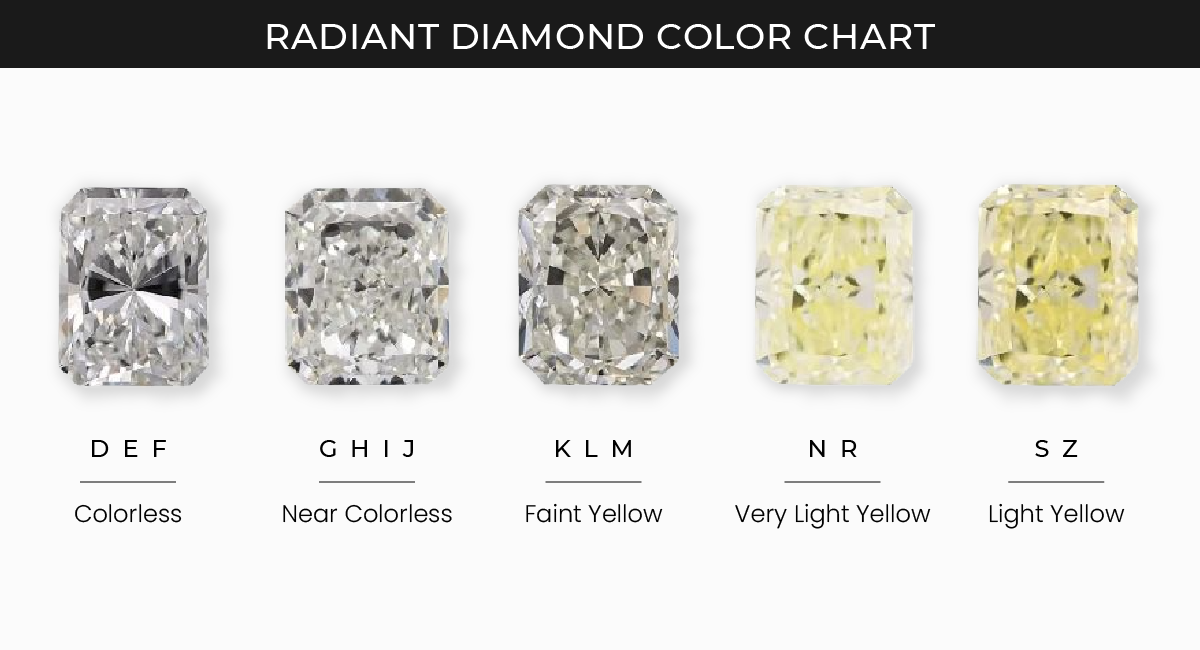
The GIA grades diamonds on the basis of color, from D to Z. D is the grade for clear, colorless diamonds. On the other hand, diamonds having a yellowish/brownish tint are graded Z. The other grades determine the spectrum between colorless and yellowish/brownish tint.
Carat
While buying any stuff, we are told to be woken about the prices. A similar case happens with diamonds too. But the terminology used here is called carat(s).
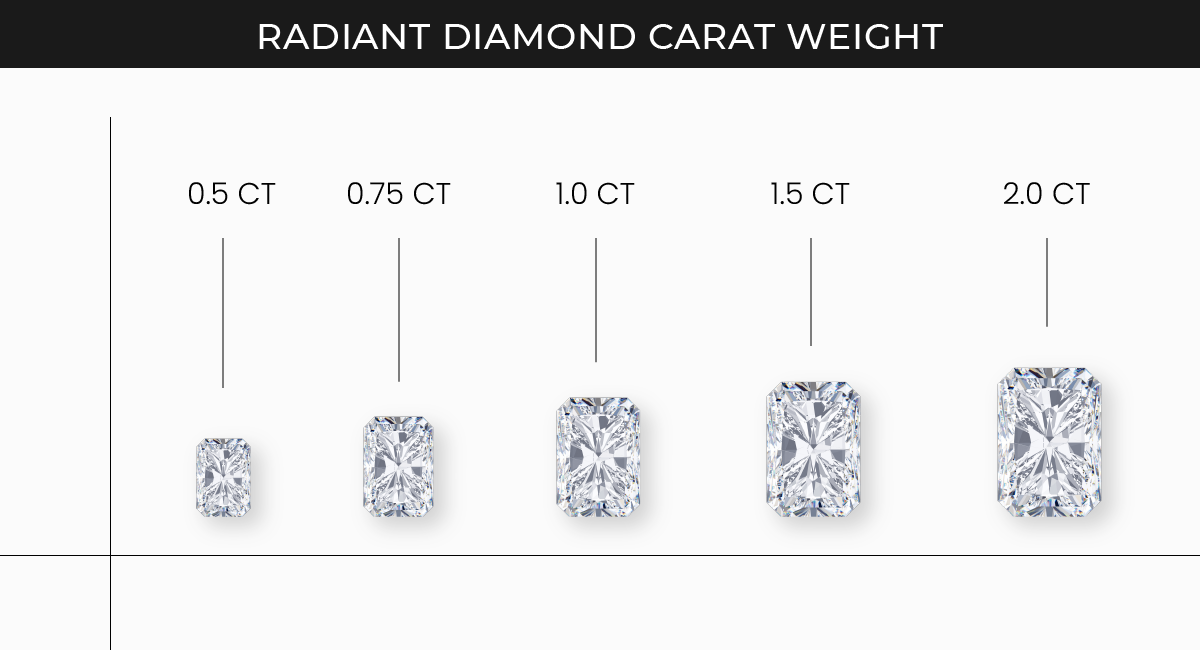
Choosing a 3 carat radiant cut diamond makes your engagement ring more impressive and makes it stand out, especially for people who want a unique design with classic shine.
Today, the 3 carat radiant cut diamond ring is a trendy option considered by many. 1 carat radiant cut diamonds are still a popular option for a well-rounded selection since they provide a good trade-off between price and size.
The “diamond carat size” provided offers a comprehensive approach to help you identify the dimensions based on the carat.
It is simply a unit measuring the diamond’s weight. 200 milligrams of the diamond is the same as a 1-carat diamond.
Radiant Cut Diamond vs Emerald Cut Diamond
The radiant diamond, resembling an emerald in shape, surpasses it in brilliance due to its modern, near-square appearance with cropped corners.
The table of ideal radiant-cut diamonds fills more than 61% of the apparent width. Both cuts are rectangular in shape and have cut corners, but they differ in that they are facetted.
Emerald cut diamonds have long, linear step-cut facets that convey refinement through a mirror appearance, whereas radiant diamonds have a brilliant cut that produces vivid bursts of light. Which one to choose depends on personal tastes in light reflection.
Pros and Cons of a Radiant Cut
Pros:
The embodiment of brilliance
All of us love sparkly diamond rings, radiant cut diamond rings take this sparkle to another level with their exceptional fire, brilliance, and scintillation. As you’ve read before, this diamond is a dazzling combination of round-cut and emerald-cut diamonds. This brings out the best characteristics of both diamonds.
It doesn’t cling to clothing
Square and rectangular diamonds are likely to get stuck to clothing or hair because of their sharp edge. A radiant cut diamond, on the other hand, has beveled edges, which prevents it from getting entangled with hair strands and clinging to clothes and other things.
Made of mettle
Diamonds are very hard to break and we all know that, but the square-shaped and rectangular-shaped have a tendency to cling to things because of which their edges might become uneven. As opposed to this, a radiant cut has trimmed corners, which essentially make the diamond break-resistant. The diamond is able to be positioned in the prongs more efficiently so that the ring doesn’t fall off.
Can be a square or a rectangle
By now, it is clear that the defining characteristics of a radiant cut diamond are straight-edged, with beveled corners and multiple facets. With this being said, a radiant cut is available in a square and a rectangular cut.
Comparatively cheaper per carat
After reading about such a marvelous creation, you might have felt like a ring like this would definitely cost a lot, right? While cutting and polishing a radiant diamond is a mammoth task, it is astoundingly cheaper than the other cuts.
That is because the cutting process of a radiant diamond requires a substantial portion of the diamond to be rough, so not a lot of diamond is wasted. Moreover, because of its excellent scintillation and brilliance, the blemishes of the original diamonds get concealed, which allows people to go for not-so-clear diamonds.
Can be aptly positioned in different kinds of settings
You would be pleasantly surprised to know that this cut perfectly fits in a variety of settings like a four-prong setting, rounded prongs, double-clad prongs, etc.
Our ethically-sourced diamonds are exclusively GIA certified, representing the top 1% of lab grown radiant cut diamonds by GIA standards. While GIA provides detailed certification for all diamonds, including radiant cuts, it’s essential to note that there are no GIA cut quality grades for radiant cuts.
Personal assessment of unique features and attention to specific measurements are crucial to optimize the radiant cut’s light performance. Please note that we specialize in lab grown radiant cut diamond engagement rings and our company is the one stop destination for you for all such needs.
Cons:
No GIA cut certificate
Well, well this was pretty obvious. A certificate by the GIA is trustworthy and reliable. Getting a good GIA grade indicates the diamond cut, color, clarity, etc. is good, without further suspicion, you can proceed to buy what you want. However, the GIA does not grade the cut quality of a radiant cut diamond, so the only way left to assess the cut of a radiant diamond is by yourself. Don’t forget to take an expert opinion.
This may not be a big concern for some people because the diamond already is utterly beautiful. But as we promised to stay honest, we are listing this con here. The gradings of a radiant cut diamond are not defined by authorized organizations like GIA. Hence, it is difficult to judge its quality.
It showcases the true color of the diamond
If you’re planning to pick a radiant cut diamond ring then make sure that it doesn’t have even the slightest bit of yellow or brownish tinge because the radiant cut is notorious for showing the tinge more aptly than other cuts.
Bow-tie effect
So, for all the newbies to the diamond industry, there is a visual impairment effect in diamonds. It is called a bow-tie effect. It persists in many diamond cuts and the radiant cut is one of them. Due to this effect, a bow tie-shaped black region is developed on the diamond surface. This makes the diamond look a little clumsy.
What is the Length to Width Ratio for a Radiant Diamond?
The radiant cut diamonds are available in two shapes, that is, the rectangular radiant cut and the square radiant cut.
When selecting a radiant cut diamond, the length-to-width ratio is an important factor to take into account. This adaptability fits a range of finger shapes and individual preferences. While square cuts provide angular beauty with greater glitter than asscher or princess cuts, elongated radiant cuts lengthen fingers.
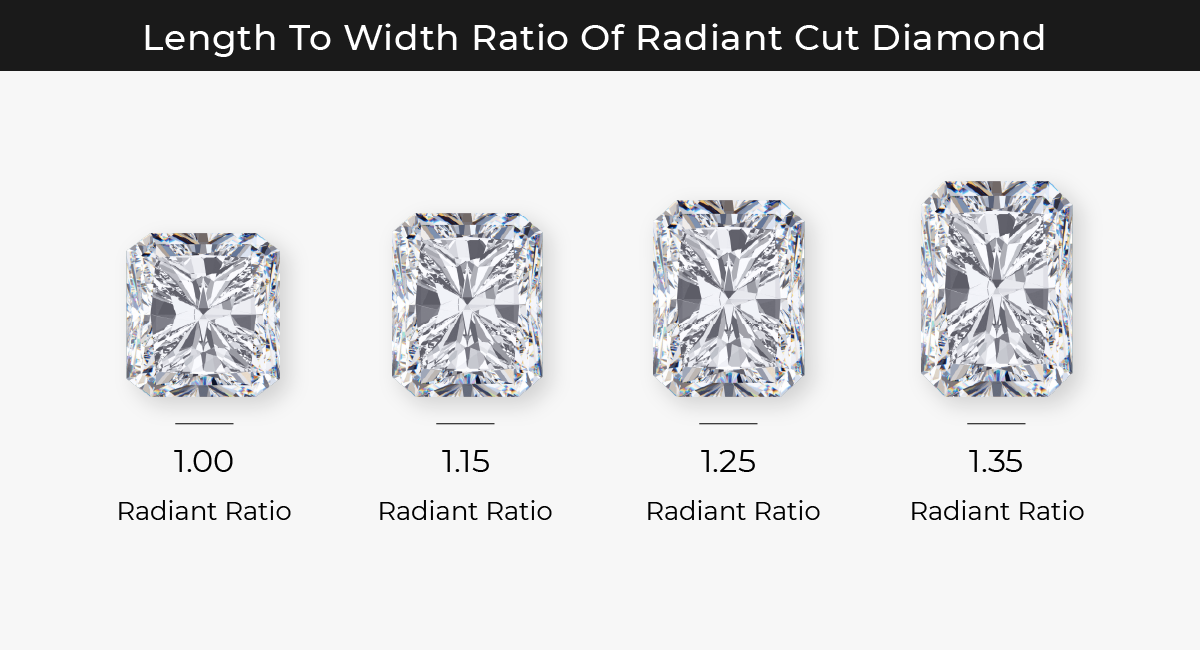
The diamond’s appearance is influenced by popular ratios such as 1.0, 1.25, 1.30, and 1.42, with the sweet spot between 1:3 and 1:3.5 favoring the maximum sparkle.
For optimal brilliance, a ratio of 1.5 is advised, though square designs have become more and more popular recently.
Whether a radiant cut diamond is rectangular or square depends on the cut’s length-to-width ratio. Both of them are breathtaking with their otherworldly brilliance, which leaves people spellbound.
The rectangular radiant cut is more traditional, while the square radiant cut is more unconventional and has a contemporary look to it. However, out of these two splendid cuts, the one you may pick depends on person-to-person. After all, the best cut for you is what you like.
What are the Best Settings for Radiant Cuts?
Radiant cut diamonds extended silhouettes add refinement and give the appearance of longer, thinner fingers.
1. Radiant Diamond With Halo Setting
The Halo Setting in diamond rings is super popular and rightly so! The setting enhances the beauty of the central diamond. The reflection of the light increases and hence your diamond appears with a much brighter allure. Halo setting means you also have to choose diamond accents that surround the primary diamond. It is a glamorous design indeed one which enhances the bearer’s fingers.
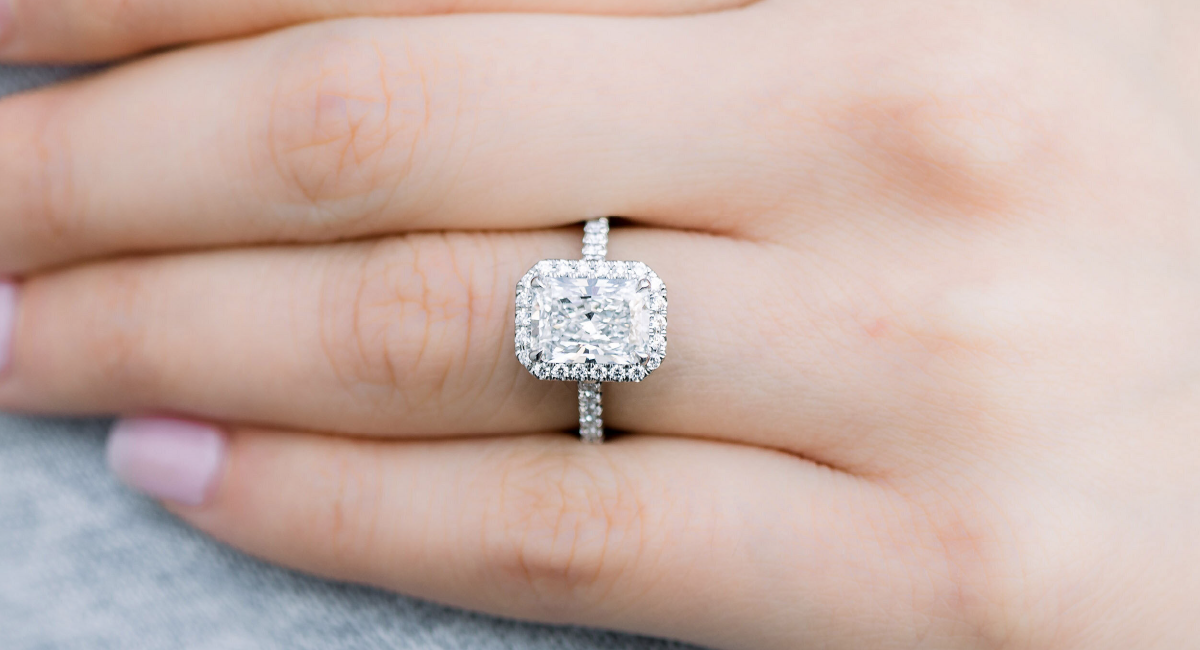
A radiant cut diamond with hidden halo is a classic and sophisticated accessory that can only enhance a woman’s natural beauty. This stunning design is sure to attract the attention of people with its classic shine and improve the wearer’s natural beauty.
2. Prong Setting
The Prong setting is the oldest and most classical setting for diamond rings. It is clean, structured, and gives a classy look to the ring. There are two types of prong settings that are commonly used, the 4 prong setting and the 6 prong setting. Mainly used in solitaire rings, it makes for the perfect engagement ring.
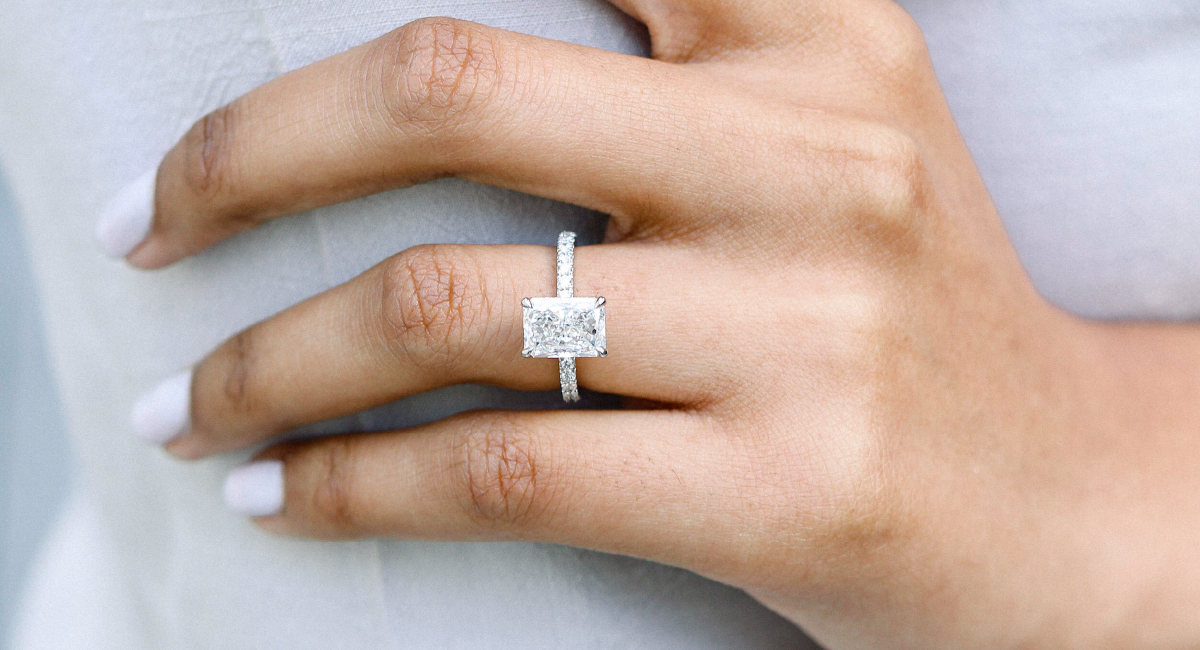
3. Radiant Cut Diamond Gold Band
When seeking the perfect radiant cut diamond eternity bands for a wedding or engagement ring, quality is paramount. Celebrities like Jennifer Aniston and Drew Barrymore have showcased the allure of radiant cut diamonds.
A radiant cut diamond wedding band with a thin gold band, as seen in Jennifer Aniston’s 8-carat stunner, offers a modern take on the classic solitaire.
Custom-made for each diamond, these diamond-encrusted thin band settings, often featuring hidden halos, ensure a flawless fit and extra sparkle, making them ideal for radiant cut diamond eternity and wedding bands.
4. Pave Setting
Pave settings gained popularity in the last decade due to their minimalistic style and clean finishing. The pave setting embellishes the diamond into the metal. Generally used alongside the primary diamond, smaller diamonds are paved into the band of the diamond to give any ring a grand look.
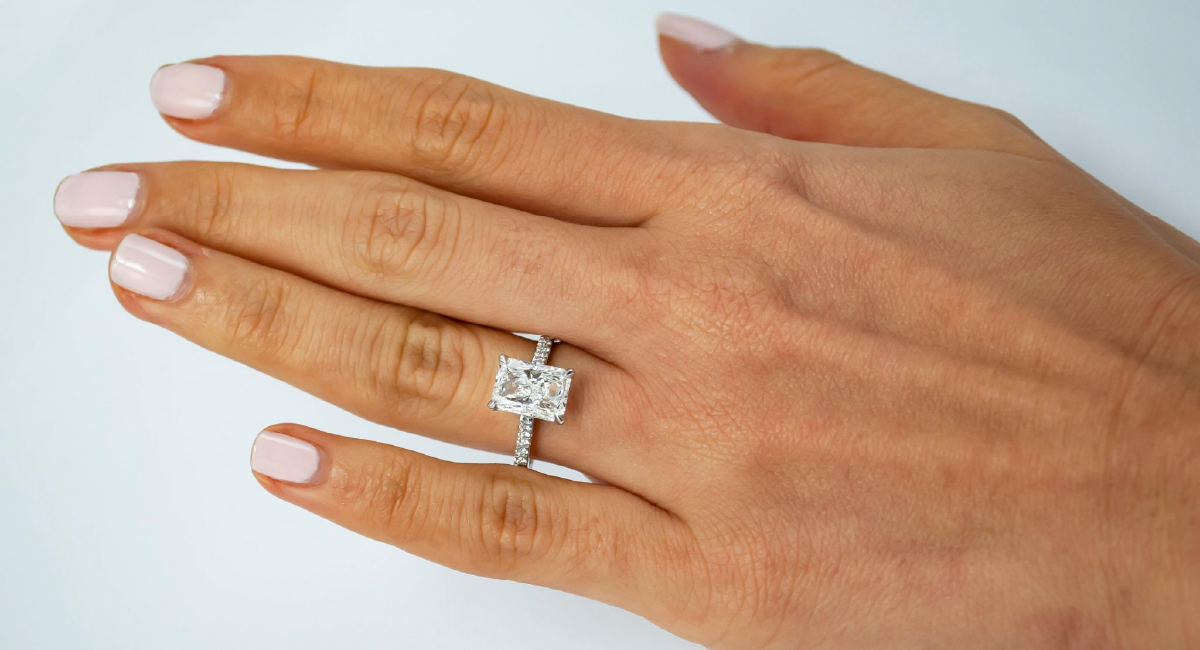
5. Three Stone Radiant Cut Diamond Ring
When two side stones support your main stone, it is a three-stone engagement ring. Three stone rings signify the couple’s history, present, and future together and are in general deeply meaningful.
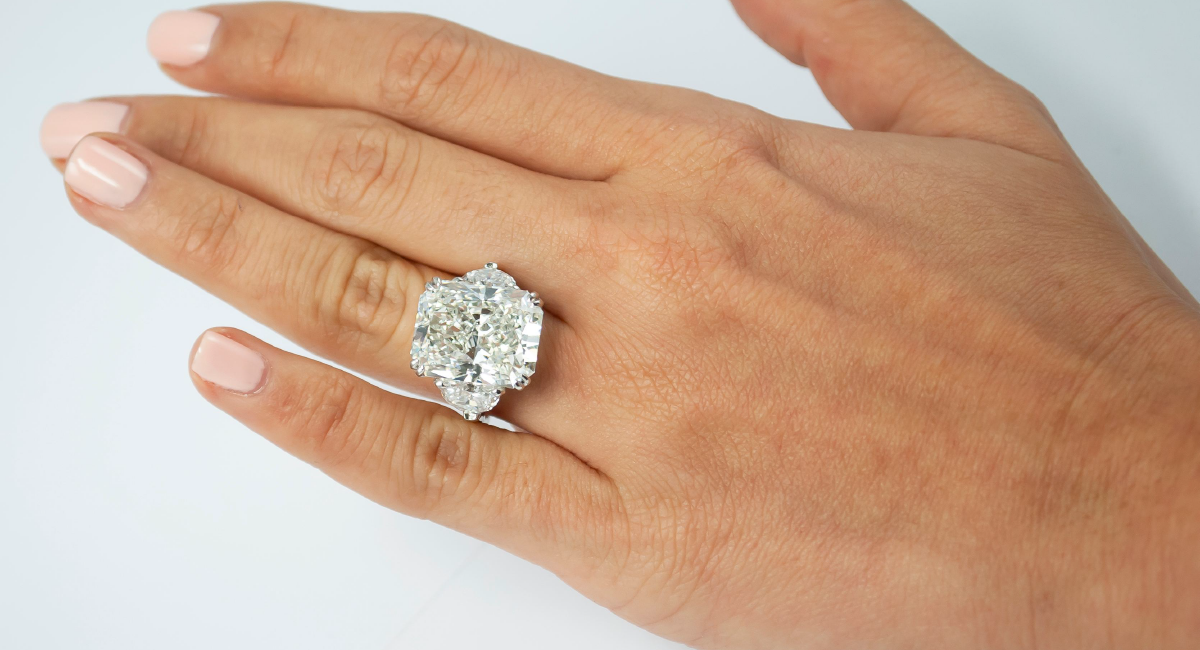
3 stone radiant cut diamond ring is a timeless design, well looked out for in the market, and looks stunning as an engagement ring. Hence, an optimal choice for lovers.
6. Radiant Cut Diamond Solitaire Ring
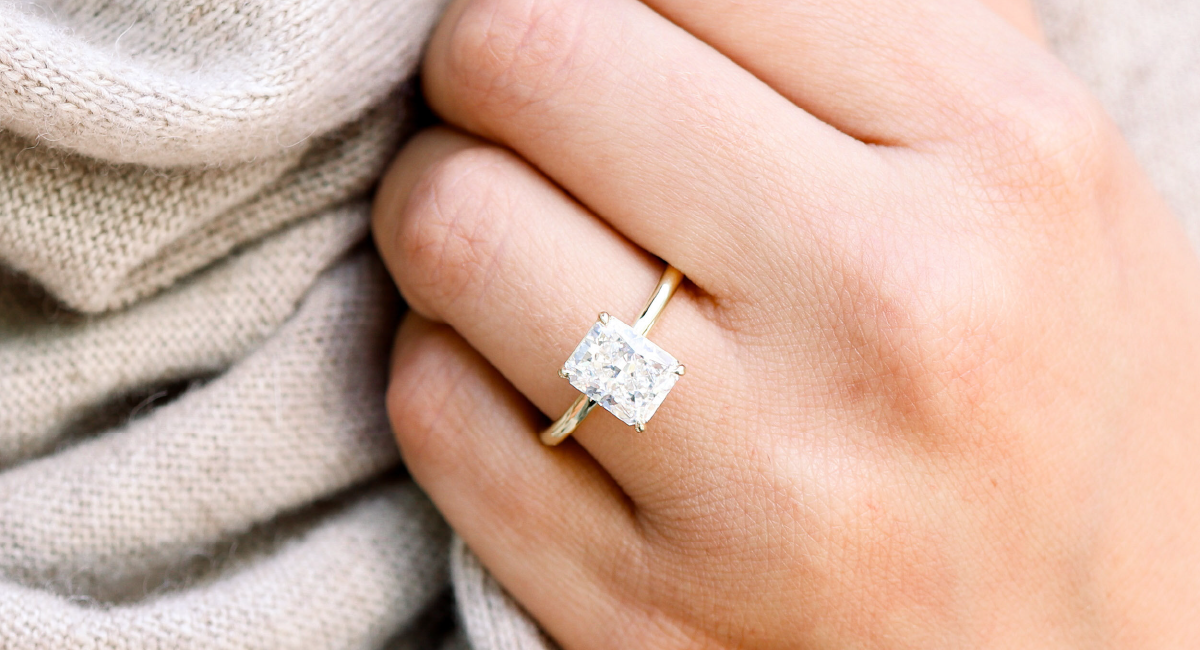
The radiant and well-cut diamond is the main emphasis of the solitaire engagement ring, which has a simple band. As they are just metal bands with no diamond decoration or glitter, solitaire engagement rings are usually a budget-friendly and popular option. If you enjoy a simple, timeless, and elegant look, then a solitaire engagement ring is ideal.
Where to Buy Lab Grown Radiant Cut Diamonds?
Loose Grown Diamond stands as the premier destination for exquisite radiant cut diamonds, ensuring high quality through ethical and transparent sourcing practices. Our commitment to customer satisfaction sets us apart in the industry, with a dedication to excellence.
In addition to those mentioned above, we offer a range of products, including radiant diamond rings, earrings, bracelets, and pendants, all in vogue these days. Our comprehensive knowledge guide ensures you make an informed purchase.
Choose from hundreds of styles of loose grown diamonds. Or show us a ring style you like from elsewhere and we can create something very similar. Feel free to share specific preferences by sending an image or URL for a customized product.
Simplify your purchase with our diamond price calculator for the best price. Enjoy added savings by entering the exclusive discount promo code at checkout. Trust LGD as your unparalleled source for radiant cut diamonds.
Conclusion
While each diamond cut is unique and magnificent in its own way, the radiant cut diamond is the perfect blend of fire, brilliance, and scintillation.
Its multiple faceted patterns give it an edge over the traditional square and rectangular cut diamonds, like a cushion, princess, emerald, etc.
Similarly, what makes it more preferred over round cut diamonds is its square-like or emerald-like shape. A similar faceted design on a rectangular or square cut diamond makes it the chic-looking sibling of the round diamond and gives it a more contemporary look.
If you have made the decision to buy one of these mesmerizing stones then don’t hesitate and get yourself a radiant cut diamond today! Keep outshining others with your dazzling ring and attitude! And don’t forget that smile!
FAQs
How much is a 2 carat radiant cut diamond ring?
Prices for 2-carat radiant cut diamonds vary based on the 4Cs (cut, color, clarity, and carat weight). Generally, they can range from $2,500 to $40,000.
What is the best table and depth for a radiant cut diamond?
Although taste is subjective, a radiant cut diamond’s table should be at least 61% of its visible width. Proportions should maximize lightness, and depth should be harmonious.
What is the price for a radiant-cut diamond?
The price of a radiant cut diamond can vary greatly, depending on its size, quality, and other attributes, but it typically starts at $200 and goes into the thousands.
Are radiant diamonds more expensive?
Radiant diamonds are often more affordable per carat compared to some other cuts. The cutting process is efficient, minimizing diamond wastage and cost.
Do radiant diamonds look bigger?
Absolutely! When set in a ring, the radiant cut diamond’s wide, flat shape makes more of the stone visible, giving the impression of a larger stone.
Why choose a radiant cut diamond?
A. Radiant cut diamonds provide an enthralling combination of fire, scintillation, and brilliance, which is why they are the cut of choice for many diamond buyers. They are a great option for individuals looking for an engagement ring that is both modern and classic because of its adaptability in shape, beveled edges, and price.
Is radiant a good diamond cut?
Yes, the radiant cut is highly regarded for its brilliance and versatility. Its unique blend of square or rectangular shape, beveled edges, and intricate facet pattern make it a popular and stunning choice for engagement rings.
What’s the difference between radiant and emerald cut?
Radiant diamonds exhibit greater sparkle due to their higher number of facets compared to emerald cut diamonds. On the other hand, the facet arrangement of emerald cut diamonds makes imperfections more noticeable.

